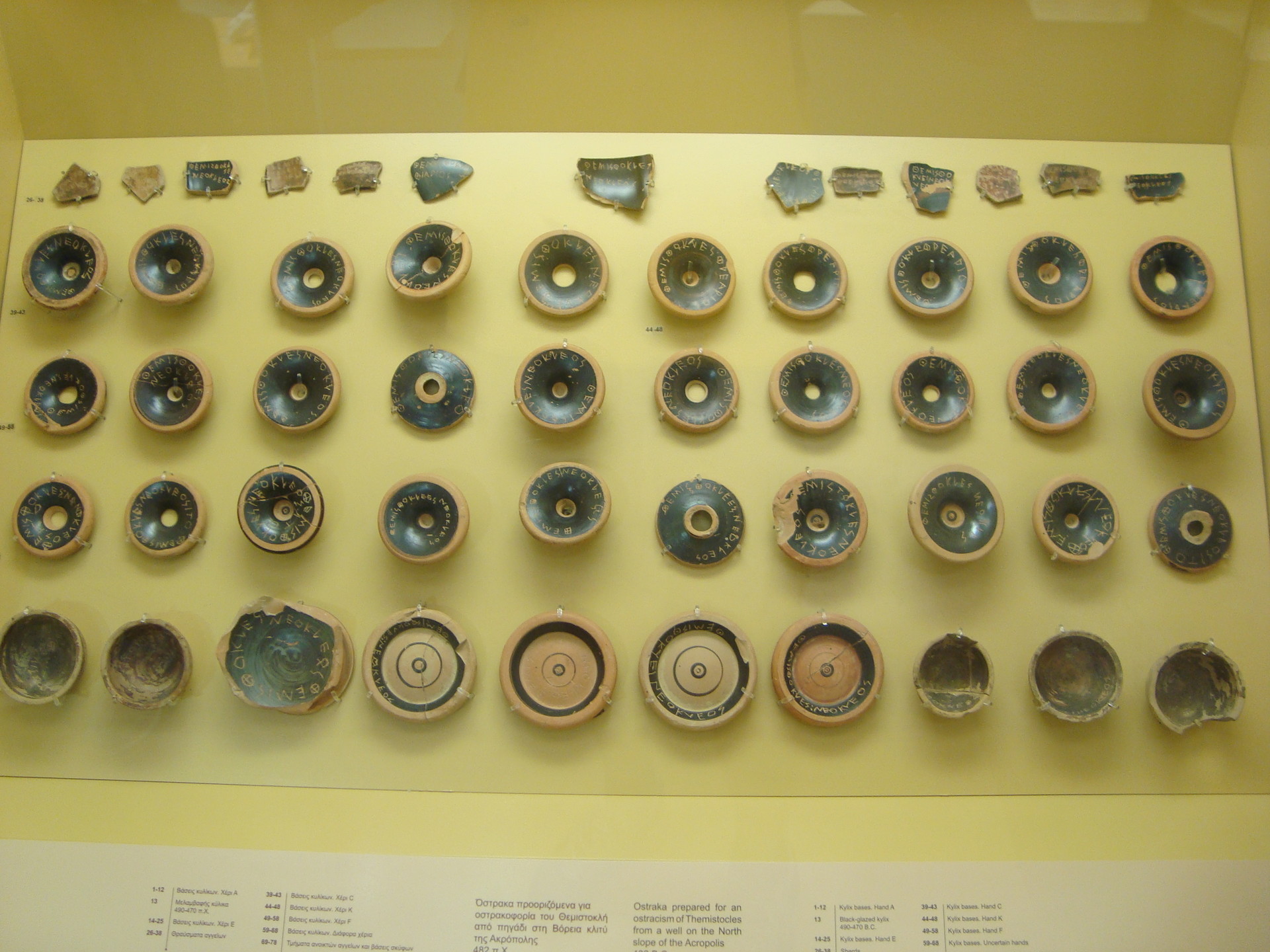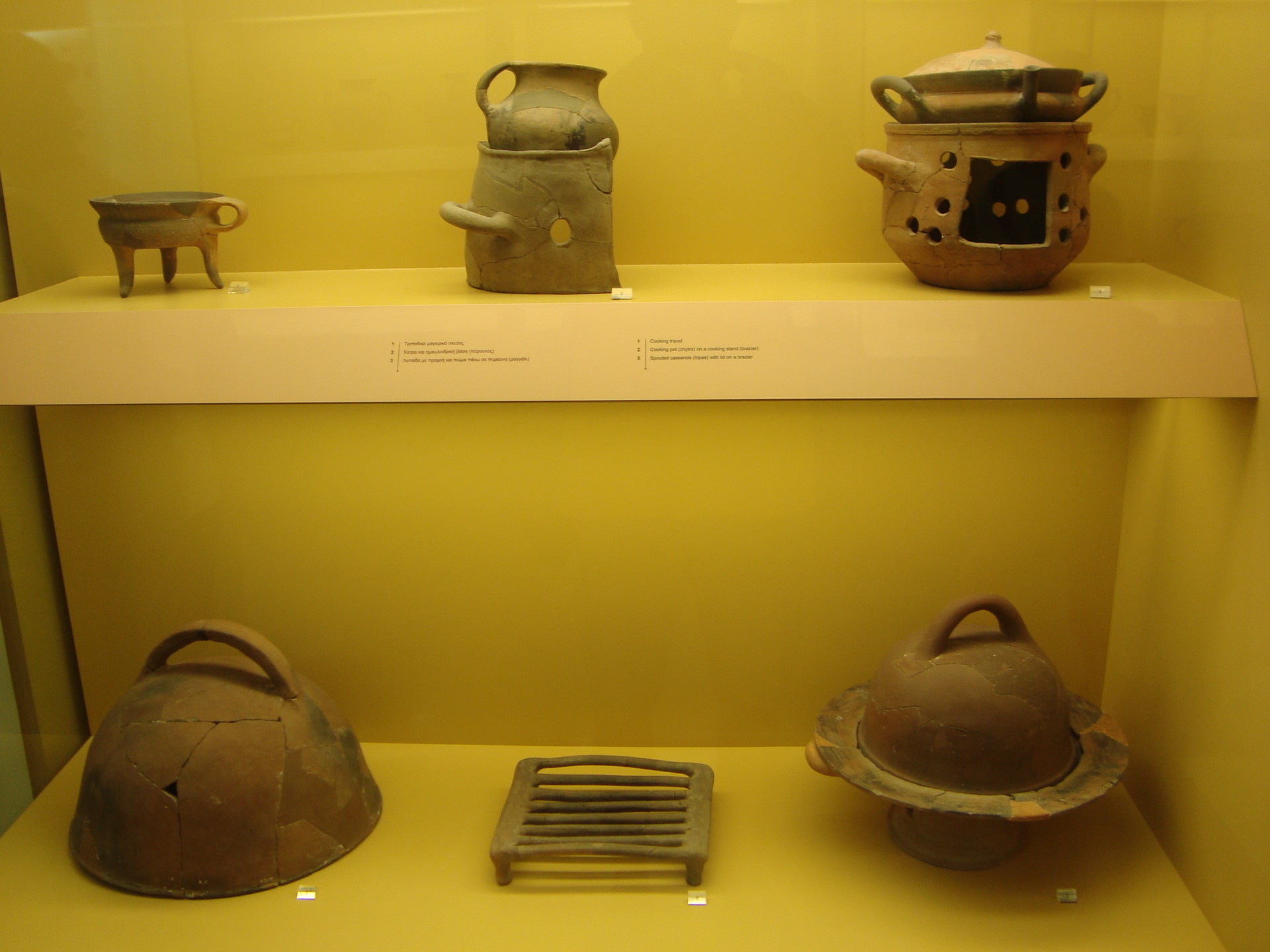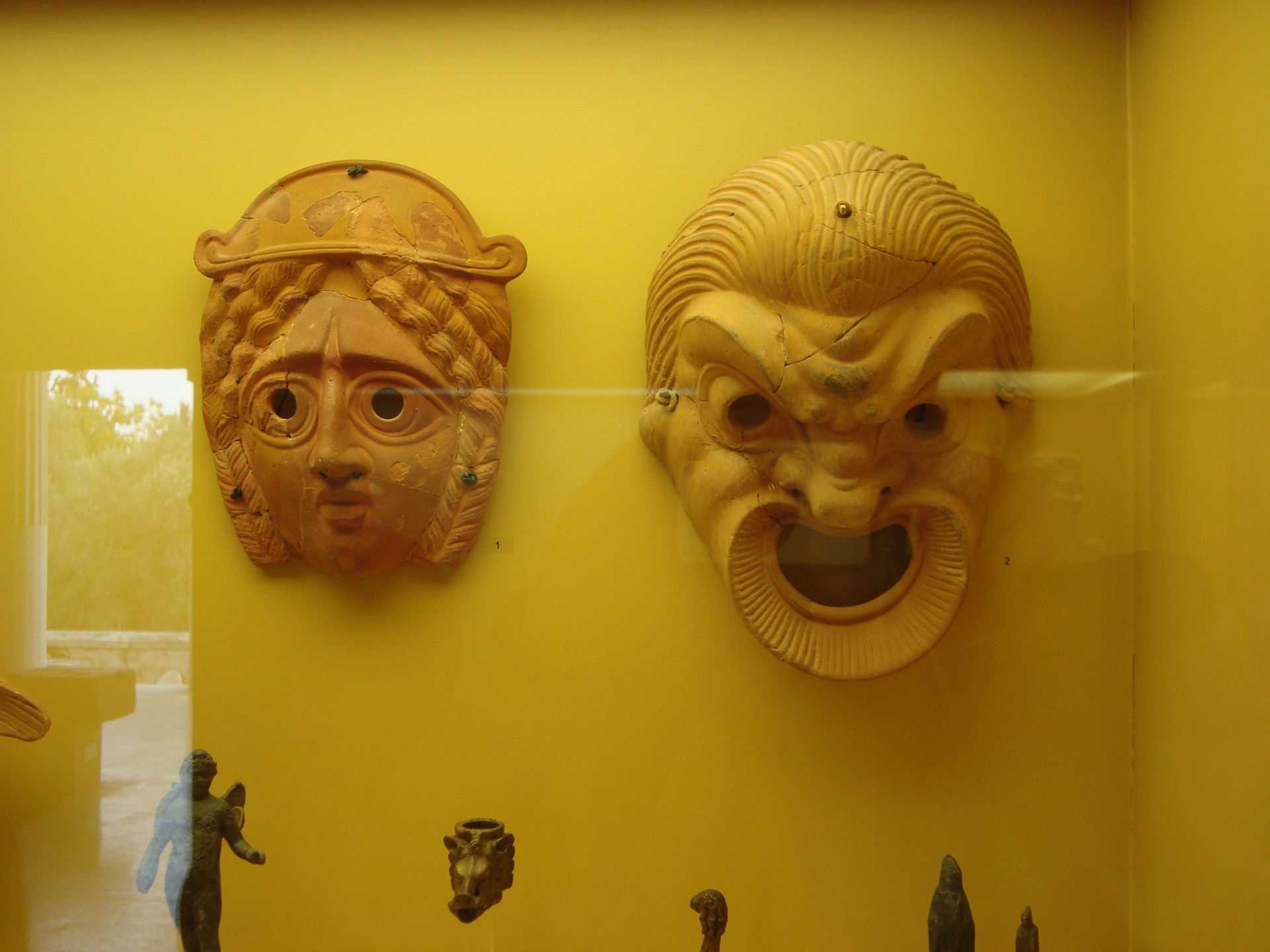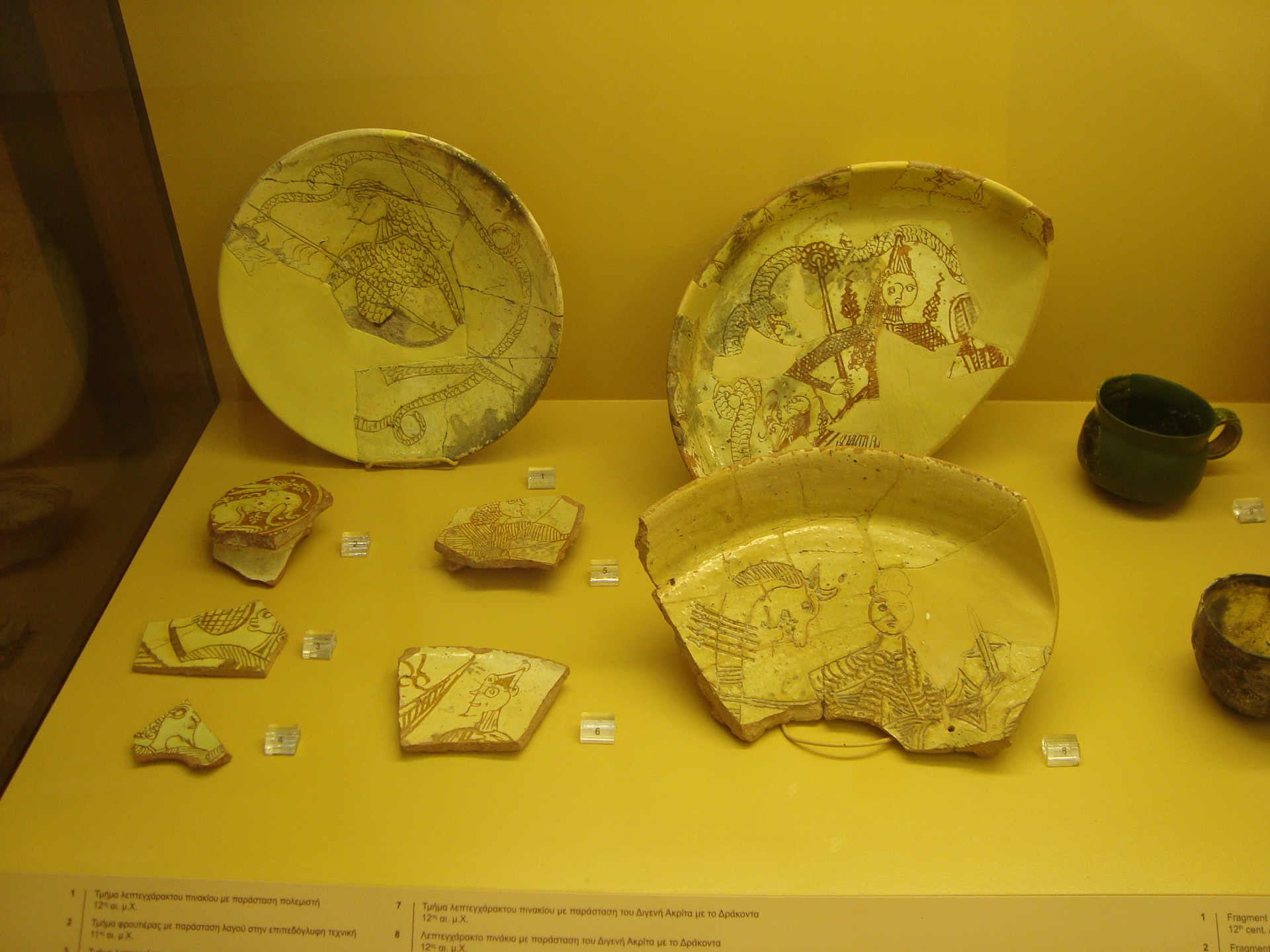Agora Museum
The Agora Museum close to the Stoa offers some little highlights important for understanding Ancient Greece: Ceramic shards like these were incised and used for voting in the new democratic system, also for ostracising (banning) people that were considered dangerous. This process is called ostrakismos, called after these shards.

Surprisingly familiar everyday objects like grills and steaming pots were also to be found ... all made from ceramics! Can you imagine that?

Greek theatre is rightly famous for figures such as Sophocles, Aeschylus and Euripides in tragedy (5th century BC) and Aristophanes and Menander for comedy (4th century BC). Theatre masks can also be found in this museum (the Latin word "persona" originally meant "mask"): Stylised types can be found here, such as the anxious maiden and the strict father figure. However, only men were allowed to act out these roles, so they also had to play the girls. That did not change up until Elisabethan times in England ... only afterwards, women slowly found their way into public performances (with women writers such as Sappho being already famous before). Today, singers such as Maria Callas and Cecilia Bartoli stun audiences worldwide!

A special treat from later Byzantine times: You see that the pictures are very different as they use lines, but no fillings. They sometimes look like children's work to me ... I guess I am a bit of a snob for preferring the art of the Classical period. Love it or hate it.

The Greek agora is not the only ancient public place in Athens ... check out my next post!
Photo gallery
Want to have your own Erasmus blog?
If you are experiencing living abroad, you're an avid traveller or want to promote the city where you live... create your own blog and share your adventures!
I want to create my Erasmus blog! →



















Comments (0 comments)